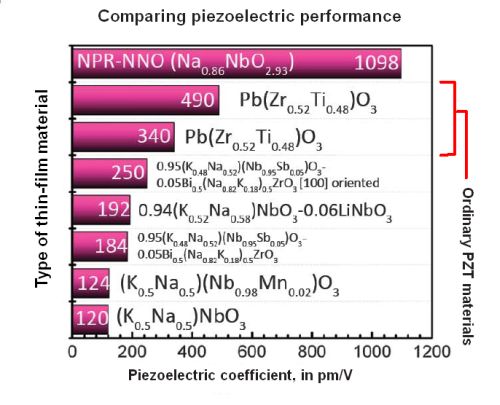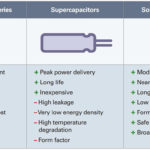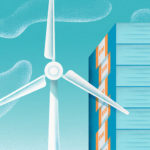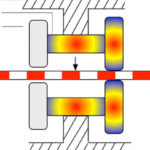If you’ve used an ink-jet printer or a tiny hearing aid, chances are those devices have employed lead-zirconium-titanium oxide (PZT, Pb(Zr,Ti)O3) piezoelectric ceramics as a means of generating ink droplets and amplified audio. These and numerous other applications have long used actuators and sensors employing piezoelectric materials which deform in response to an applied electric field.
One problem with existing devices is that they tend to use either lead,which can be environmentally troublesome, or somewhat exotic materials such as terbium, dysprosium, or gallium. However, new research coming out of Penn State, the University of Missouri, and the University of Singapore has found material that not only avoids the use of such materials but also exhibits a much higher piezoelectric effect.

The researchers used a piezoelectric material comprised of ferroelectric thin films comprised of a simple ternary oxide, NaNbO3. At low electric fields, the piezoelectric response is close to that of PZT. But the effective piezoelectric response increases by more than an order of magnitude to >8,000 pm/V when the material sees higher electric fields working at lower frequencies.
Moreover, the piezoelectric films may be easier to produce than PZT or similar materials. The fabrication process employs low-cost physical vapor deposition, a technique long used in semiconductor fabrication as well as in other areas. Also, the chemical composition has limited environmental impact compared to the lead-based alternatives. Additionally, the crystal structures providing the piezoelectric effect form through self-assembly in the material. In contrast, it typically takes exotic dopants or precisely controlled chemistries to get the necessary structures in conventional piezoelectrics.
Ferroelectric crystals exhibit piezoelectric effects because they have a spontaneous polarization that can be reoriented with a sufficiently strong electric field. A factor that minimizes the amount of energy needed to distort the crystal during polarization is the formation of magnetic domains in the material. The motion of domain walls is a major reason for the very large piezoelectric response.
The researchers use what they call a self-assembly method to get the crystal structure needed for the piezoelectric effect. A lack of sodium ions creates what researchers term nanopillar defects within the ferroelectric crystal which has a perovskite-based structure. Local strain fields associated with the nanopillars and possibly other effects modify the ferroelectric polarization directions inside the material. In an electric field, the polarization can rotate along multiple directions. Such polarization rotations are often accompanied by a big boost of the piezoelectric response through mechanisms that are well understood.
The researchers described their work in a recent issue of Science.







Leave a Reply